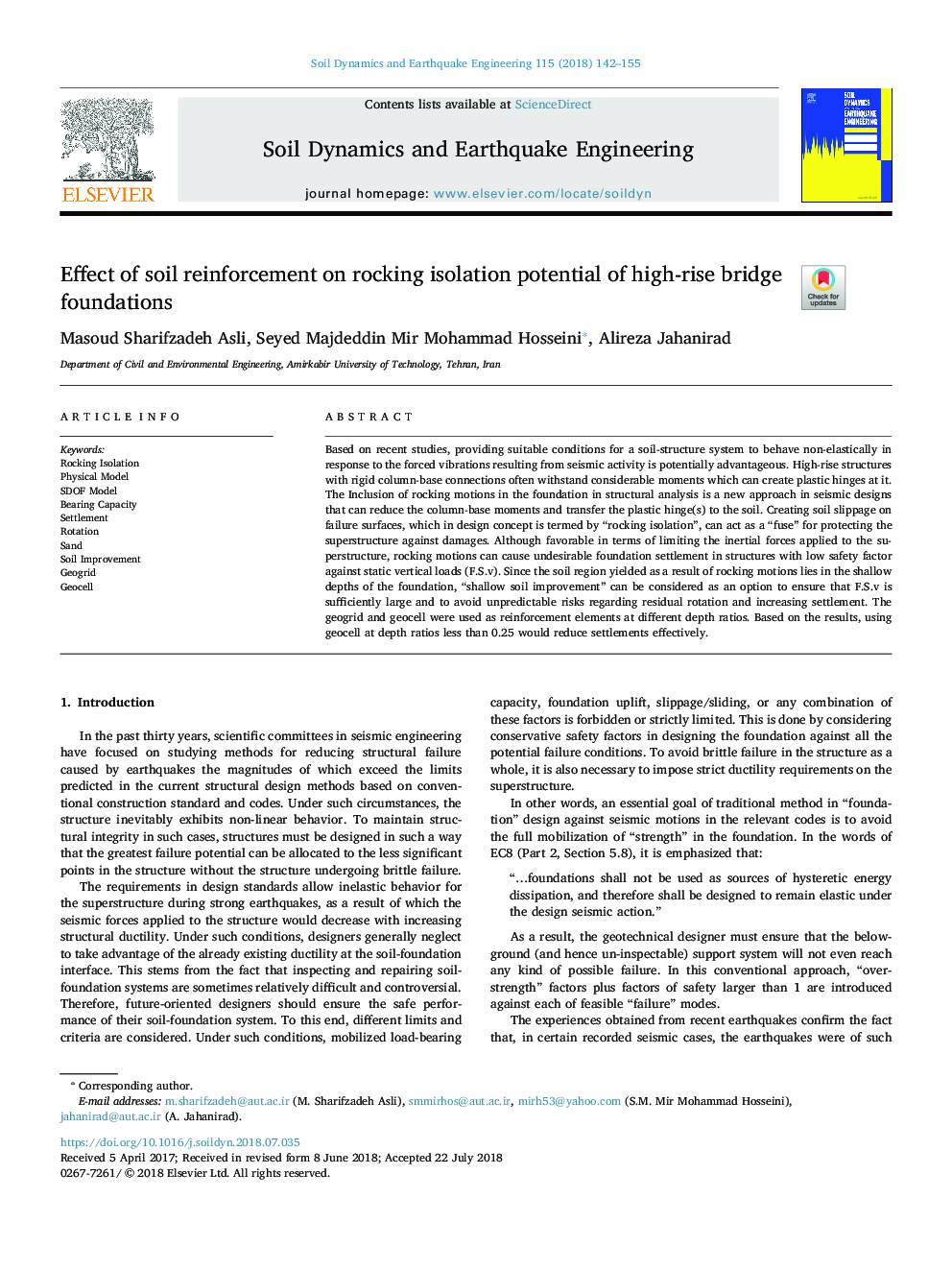| Article ID | Journal | Published Year | Pages | File Type |
|---|---|---|---|---|
| 10132074 | Soil Dynamics and Earthquake Engineering | 2018 | 14 Pages |
Abstract
Based on recent studies, providing suitable conditions for a soil-structure system to behave non-elastically in response to the forced vibrations resulting from seismic activity is potentially advantageous. High-rise structures with rigid column-base connections often withstand considerable moments which can create plastic hinges at it. The Inclusion of rocking motions in the foundation in structural analysis is a new approach in seismic designs that can reduce the column-base moments and transfer the plastic hinge(s) to the soil. Creating soil slippage on failure surfaces, which in design concept is termed by “rocking isolation”, can act as a “fuse” for protecting the superstructure against damages. Although favorable in terms of limiting the inertial forces applied to the superstructure, rocking motions can cause undesirable foundation settlement in structures with low safety factor against static vertical loads (F.S.v). Since the soil region yielded as a result of rocking motions lies in the shallow depths of the foundation, “shallow soil improvement” can be considered as an option to ensure that F.S.v is sufficiently large and to avoid unpredictable risks regarding residual rotation and increasing settlement. The geogrid and geocell were used as reinforcement elements at different depth ratios. Based on the results, using geocell at depth ratios less than 0.25 would reduce settlements effectively.
Keywords
Related Topics
Physical Sciences and Engineering
Earth and Planetary Sciences
Geotechnical Engineering and Engineering Geology
Authors
Masoud Sharifzadeh Asli, Seyed Majdeddin Mir Mohammad Hosseini, Alireza Jahanirad,
